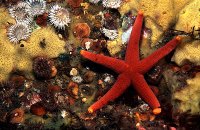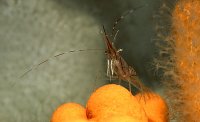 |
|
|||||||||||||||||||||||||||||||||||||||||||||||||||||||||||||||||||||||||||||||||
|
||||||||||||||||||||||||||||||||||||||||||||||||||||||||||||||||||||||||||||||||||
|
|
||||||||||||||||||||||||||||||||||||||||||||||||||||||||||||||||||||||||||||||||||
|
||||||||||||||||||||||||||||||||||||||||||||||||||||||||||||||||||||||||||||||||||
|
Those visiting the Marine Reserve who are not Scuba Divers need not feel left out, for along the shores of the Marine Reserve there are plenty of suitable sites teeming with marine life to be explored. Twice a day at the ebb of the tide the sea recedes to reveal a more dormant world, a coastline studded with pools and covered in a blanket of seaweed. The mobile animals have taken shelter or moved off, other animals have closed up tight against the drying air and the seaweed has flopped against the rocks. The tide takes more than 6 hours to go from high water to low, so creatures living high on the shore have longer to wait for the tide to return, and less time to go about their business. As you move from the land to the sea (the upper to lower shore) life becomes a little easier for the creatures found on the rocks and in the pools. These pools can be large or small, deep or shallow, each presents in miniature a reflection of what the entire coastline is like when the tide is high. When covered by the rising tide the rest of the shoreline also comes to life. Seaweeds buoyed up by the water, wave in the swell. Limpets and winkles crawl about, grazing in earnest before the falling tide forces them to close up once more. Barnacles and anemones open up to exploit the food-bearing water while fish and crabs hunt around for tasty titbits. Exploring the seashore is thus the perfect activity for those wishing to learn more about the plants and creatures that populate our coastlines. Within the Marine Reserve the majority of the shoreline is accessible for exploration. Recommended sites include Coldingham Sands, Eyemouth Beach and best of all, Killiedraught Bay. Images by Jim Greenfield.
|
|
||||||||||||||||||||||||||||||||||||||||||||||||||||||||||||||||||||||||||||||||
|
St. Abbs & Eyemouth Voluntary Marine Reserve. |
||||||||||||||||||||||||||||||||||||||||||||||||||||||||||||||||||||||||||||||||||



